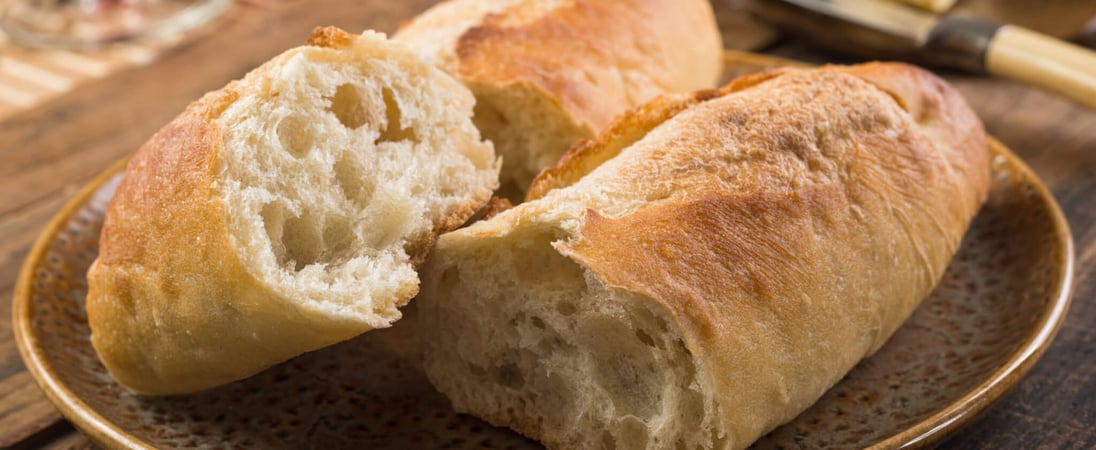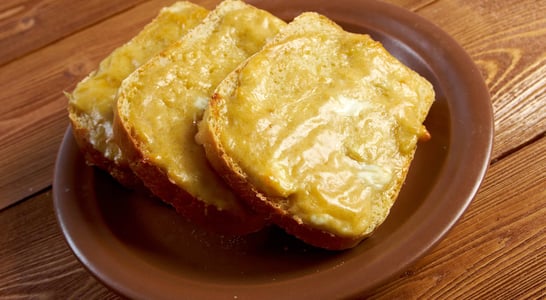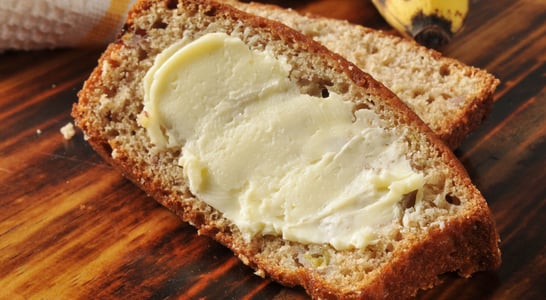
National French Bread Day
Crusty, chewy, and delicious, this iconic loaf is the perfect vessel for everything from melted cheese to tangy spreads. Bon appétit!
Oui, Oui, monsieur – please, pass me another loaf of French bread! Few things are more tantalising than a long, thin stick of French bread (also known as a baguette) enjoyed warm and fresh out of the oven.
Its crispy crust and soft center are defining factors for this tasty treat. But before it even comes out of the oven, though, this bread beckons to anyone nearby who can enjoy the smell.
National French Bread Day is a great opportunity to indulge in some classic comfort food at its finest, while also learning a little bit about French culture!
How to Celebrate National French Bread Day
For those folks who absolutely love all things French–or those who just love a tasty baguette of French Bread–many ideas come to mind for celebrating the day:
Eat Some French Bread
Enjoying National French Bread Day doesn’t have to be complicated. It can be as simple as serving a lovely loaf of French bread warm, slathered with butter and a chunk of cheese on the side.
Why not embrace the whole continental experience and have a glass of fine French wine with it? More, s’il vous plaît!
Enjoy Fun Facts About French Bread
Check out a few of these bits of trivia related to the topic of French Bread:
-
Because they must be eaten fresh, French people typically purchase their baguettes twice a day: one in the morning on their way to work, and one in the evening on the way home.
-
While a little difficult to track, it is estimated by the Observatoire du Pain (The French Bread Observatory) that French people consume 320 baguettes every second of each day.
-
In fact, access to bread is so vital that, until 2014, Paris lawmakers prohibited certain community bakeries from closing for summer holidays at the same time, lest the entire neighborhood be tragically without bread!
Learn to Make French Bread Baguettes
Although bread-making can sometimes be tedious, some people might really enjoy the challenge and sense of accomplishment that comes from making their own French Bread.
Traditional bakers of French bread use a starter that has been passed down through generations, which makes it a little difficult to recreate. Still, it’s worth a try!
Many recipes are available online or in cookbooks, but the basic ingredients are likely to include bread flour, sea salt, dry yeast and warm water. In fact, in order to be truly authentic, national law dictates that “French” Bread contains only these four ingredients.
Of course, when making it at home, other creative ingredients, such as seeds for topping, are subject to personal preference.
The steps for making French Bread are fairly simple, including mixing, kneading, allowing time for the dough to rise, and then rolling it into the proper baguette shape. The lack of preservatives make it so yummy–but also mean that it must be eaten right away, so don’t make it unless you’re also ready to eat it!
Dress as a Frenchman (or Woman)
The French are about as stylish and savvy as Europeans come, and their fashion is no exception. However, one specific idea comes to mind when thinking of a traditional French costume: the black and white striped shirt.
Get the look by donning a black and white striped shirt with elbow-length sleeves. Add a pair of plain black or red pants. A set of black or red suspenders would look great too. It might also be fun to draw on a curly mustache (with eyebrow pencil or mascara).
And for those who happen to have a poodle or who can borrow one, well that is certainly taking this costume to the next level. But the most important part of the outfit? The French beret on top, of course!
Once dressed up, if people ask why the costume, then it’s a great opportunity to tell them that it’s time to celebrate National French Bread Day.
Watch a French Film
One excellent way to embrace French culture from afar is to sit down comfortably in front of a French film–with a baguette in hand, of course!
- Les Miserables, 2012 musical (based on the 1862 book by Victor Hugo and the 1987 Broadway musical adaptation) starring Hugh Jackman, Russell Crowe, Anne Hathaway and more. In the story, Hugh Jackman’s character went to jail for stealing bread.
- La Vie En Rose, 2007 biopic of French singer, Édith Piaf, starring Maria Cotillard (who won an Oscar for the film).
- Amélie (The Fabulous Destiny of Amélie), a 2001 fictional tale about a whimsical young woman in Paris who seeks to help those in the world around her.
- French Kiss, 1995 romantic comedy starring Meg Ryan and Kevin Kline.
Learn to Speak a Little French
Embracing the fullness of French culture, it’s fun to learn a few French words to practice with friends. Try out these basic words to celebrate National French Bread Day:
- Pain (pronounced like the English “pan”): Bread
- Bonjour: Hello, Good morning
- Au revoir: Goodbye
- Oui (pronounced like the English “we”): Yes
- Non: No
- Merci: Thank you
Enjoy Many Types of French Breads
Of course, the baguette isn’t the only bread that France has offered the world. Those who can locate a nearby French bakery are in luck and may find all kinds of treats to appreciate on National French Bread Day, including croissants, pain au chocolat, brioche, batard, and much more!
National French Bread Day FAQs
Did Napoleon influence the baguette’s shape?
Legend suggests Napoleon Bonaparte ordered bread in long, thin shapes to fit into soldiers’ uniform pockets.
This design made it easier for troops to carry rations without additional containers or backpacks.
While the story remains unproven, it reflects how practical needs could have shaped the baguette’s development. The tale also emphasizes the bread’s role in French culture as an essential and portable stapl
Why are baguettes sometimes called “the bread of the French Revolution”?
During the French Revolution, bread shortages sparked outrage and increased public uprisings.
To address these issues, the government mandated bakers to create affordable, simple bread for all citizens.
This initiative symbolized equality, as both the wealthy and the poor consumed similar loaves. Baguettes became a practical and symbolic choice, highlighting unity during a time of upheaval.
The phrase reminds us how bread was a key part of social justice in revolutionary France.
How does the Fête du Pain festival celebrate French bread culture?
The Fête du Pain, or Festival of Bread, is an annual celebration held across France, with a major event in Paris.
It honors the skill and artistry of bakers. Visitors can watch live bread-making demonstrations, attend workshops, and sample fresh baguettes, pastries, and other creations.
The festival also showcases regional bread varieties, emphasizing how deeply intertwined bread is with French identity and local traditions. Schools and families often join in, making it a joyful community event.
Is there a traditional way to test if a baguette is fresh?
A classic method is to gently squeeze the baguette. If it produces a crisp, crackling sound, the bread is fresh.
This sound comes from the delicate crust, a hallmark of a well-baked baguette. Another test involves inspecting the texture. Fresh baguettes have a golden, flaky crust and a soft, airy interior.
French people also often hold the baguette to their ear after buying it, enjoying the “music” of its crunch.
How did UNESCO recognize the cultural importance of baguettes?
In 2022, UNESCO added the “artisanal know-how and culture of baguette bread” to its Intangible Cultural Heritage list.
This designation highlights the baguette as more than just food. It acknowledges the expertise of French bakers and the bread’s role in daily life, from morning markets to family meals.
UNESCO’s decision underscores the significance of preserving culinary traditions and supporting small bakeries, where most authentic baguettes are made.
What unique ingredients do some bakers add to modern baguettes?
While traditional baguettes are made with just four ingredients—flour, water, yeast, and salt—modern bakers experiment with creative twists.
Garlic, olives, or herbs like rosemary are popular additions. Some coastal regions add seaweed for a salty flavor and a green tint.
Others incorporate seeds, nuts, or even dried fruits for texture and sweetness. These variations maintain the baguette’s classic shape while introducing exciting flavor profiles that appeal to adventurous eaters.
Is there a connection between baguettes and the Paris Métro?
An enduring legend claims baguettes were designed to avoid workers carrying knives while building the Paris Métro in the late 1800s.
Construction managers reportedly wanted to prevent conflicts, so the long, easily torn bread eliminated the need for cutting tools.
While the story is likely apocryphal, it underscores how deeply connected baguettes are to French daily life and the ingenuity behind their design.
How do bakeries worldwide put their twist on baguettes?
In Japan, French baguettes have been adapted to local tastes with unique toppings and fillings.
Matcha (green tea powder) and sweet red bean paste are popular, offering a delightful fusion of French and Japanese flavors. In India, baguettes are often stuffed with spiced fillings like curried vegetables.
Meanwhile, some U.S. bakeries make baguette sandwiches with regional ingredients, such as lobster rolls in New England. These global interpretations show how versatile the baguette can be.
What’s a unique superstition tied to baguettes?
Many French people avoid placing baguettes upside down on tables, believing it brings bad luck.
This superstition dates back to medieval times when bakers reserved upside-down loaves for executioners.
Since executioners were feared and avoided, people associated their bread with misfortune. Even today, many respect this tradition, reflecting how deeply cultural beliefs and bread are intertwined in France.
Can baguettes help preserve other foods?
French cooks often use baguettes as a natural preservative for pantry items. A common trick involves placing a piece of baguette in a container of brown sugar to keep the sugar soft and clump-free.
The bread absorbs moisture and prevents the sugar from hardening. It’s a simple, practical kitchen hack that highlights the baguette’s versatility beyond the dining table.
History of National French Bread Day
The French have been baking long sticks of bread for more than 200 years, but it was only in 1920 that the current baguette we know and love came into being.
During that time, a law was passed in France in 1920 that prohibited anyone from starting work before 4am, making it impossible for French bakers to get their traditional breads baked in time before all of the people went off to work.
They needed a creative solution to make their bread bake faster, but they didn’t want to cheat their customers. Voilà, the quick baking baguette was born!
During this time, the innovative French bakers discovered that bread made in this longer shape was actually convenient for cutting as well as for storage. What began as a creative way to speed baking time ended up as a revolutionary way to appreciate bread.
Also on ...
View all holidaysNational Single Parent Day
Raising kids solo can be tough, but single parents are superheroes who manage it all. Hats off to their resilience, love, and dedication!
World Poetry Day
With words as paint and emotions as the canvas, verses come alive, painting stories of heart and soul, in a symphony of expression.
National Crunchy Taco Day
There’s nothing quite like a delicious crunchy taco to provide super-satisfying flavor for lunch or dinner.
National Corn Dog Day
Get ready to enjoy a delicious snack on a stick! This crispy and savory treat will make your taste buds dance with joy.
We think you may also like...
National Welsh Rarebit Day
Made with cheese and ale sauce and eaten on top of toast, Welsh Rarebit is a niche but tasty food. Try making your own to appreciate this strange taste sensation.
German Butterbrot Day
Start your day off right on German Butterbrot Day with a simple piece of toast and your favorite high-quality butter. That’s it!
Global Scouse Day
A cherished culinary tradition, warm and hearty, born from the heart of a vibrant city, nourishing body and soul through generations.







